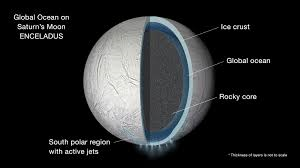
Breaking News
 Billionaire Businessman Reflects on 'Not Hard' Decision to Leave Crime-Ridden Chicago
Billionaire Businessman Reflects on 'Not Hard' Decision to Leave Crime-Ridden Chicago
 China's Mineral Power Play Will Succeed--Until It Doesn't
China's Mineral Power Play Will Succeed--Until It Doesn't
 Individualism and Self-Determination in the American Tradition
Individualism and Self-Determination in the American Tradition
 Gold's OMINOUS Warning: A Global Monetary Reset That'll BLINDSIDE Americans
Gold's OMINOUS Warning: A Global Monetary Reset That'll BLINDSIDE Americans
Top Tech News
 3D Printed Aluminum Alloy Sets Strength Record on Path to Lighter Aircraft Systems
3D Printed Aluminum Alloy Sets Strength Record on Path to Lighter Aircraft Systems
 Big Brother just got an upgrade.
Big Brother just got an upgrade.
SEMI-NEWS/SEMI-SATIRE: October 12, 2025 Edition
 Stem Cell Breakthrough for People with Parkinson's
Stem Cell Breakthrough for People with Parkinson's
 Linux Will Work For You. Time to Dump Windows 10. And Don't Bother with Windows 11
Linux Will Work For You. Time to Dump Windows 10. And Don't Bother with Windows 11
 XAI Using $18 Billion to Get 300,000 More Nvidia B200 Chips
XAI Using $18 Billion to Get 300,000 More Nvidia B200 Chips
 Immortal Monkeys? Not Quite, But Scientists Just Reversed Aging With 'Super' Stem Cells
Immortal Monkeys? Not Quite, But Scientists Just Reversed Aging With 'Super' Stem Cells
 ICE To Buy Tool That Tracks Locations Of Hundreds Of Millions Of Phones Every Day
ICE To Buy Tool That Tracks Locations Of Hundreds Of Millions Of Phones Every Day
 Yixiang 16kWh Battery For $1,920!? New Design!
Yixiang 16kWh Battery For $1,920!? New Design!
 Find a COMPATIBLE Linux Computer for $200+: Roadmap to Linux. Part 1
Find a COMPATIBLE Linux Computer for $200+: Roadmap to Linux. Part 1
'Substantial' ocean of water beneath moon's surface could help create human colony

Researchers at Brown University in the US examined glass beads, a type of volcanic crystal gathered during the Apollo 15 and 17 missions in the 1970s, and found they contained similar volumes of water to Earth's basalt rock.
The leaders of the study, which has been published in Nature Geoscience, cite the parallels as evidence that parts of the moon contain a similarly large amount of water. This, they believe, could be useful for future lunar missions as it means water could potentially be extracted rather than carried from home.
"Other studies have suggested the presence of water ice in shadowed regions at the lunar poles, but the pyroclastic deposits are at locations that may be easier to access," said lead author Dr. Shuai Li, formerly of Brown University and now at the University of Hawaii.
"Anything that helps save future lunar explorers from having to bring lots of water from home is a big step forward, and our results suggest a new alternative."



